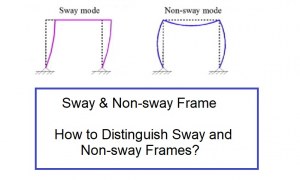🕑 Reading time: 1 minute
In most cases design of reinforced concrete beams and slabs is governed by deflection rather than strength. Various measures to control deflections of RCC beams and slabs are explained in this article. If these options are implemented properly, the result could be more cost effective compared to elements that either show deflections consequently require expensive rehabilitation or members which designed for unnecessary deflection response. To fully evaluate these techniques, designers need to know reinforced concrete member stress level; whether concrete member is uncracked or fully cracked. The concrete members are assumed to be fully cracked when applied moment in positive parts are larger than two times cracking moment. Furthermore, influence of options on deflection, nearly the amount of deflection reduction, and application of these techniques in proper conditions are discussed for all options. These choices are divided into three major categories includes design techniques, construction techniques, selection of materials. In this article design options for reducing deflections are discussed.
How to Reduce Deflection of Reinforced Concrete Beams and Slabs?
Following are the design techniques to reduce deflections of reinforced concrete beams and slabs- Make the element deeper
- Make the member wider
- Introduce compression reinforcement
- Add tension reinforcement
- Apply or increase prestressing
- Revise geometry of the structure
- Review deflection limit criteria

Make the RCC Beams and Slabs Deeper
It might be difficult or impossible to modify dimension of concrete elements after architectural design is established, but there are situations where increasing beam depth can be carried out. It is claimed that reducing deflection is approximately equal to the square of the effective depth [I = nAs (1-k) jd2 almost = d2] for cracked and nearly equal to the cube of the ratio of total depth [I = (bh3)/12 almost = h3] for uncracked sections. Improving stiffness by increasing depth is more effective in uncracked rectangular section compare with uncracked T-sections. This is because the flanges do not change and influence of the flange is constant on uncracked stiffness and is not proportional to increase depth. When the depth of a section is increased to an extent that could lead to decline tensile stress, so that, cracked section become partially cracked or uncracked, then the member stiffness will be increased substantially. Lastly, the stiffness of uncracked element could be higher three times than the stiffness of partially cracked element.Choose Wider Member Sections of RCC Beams
If the element is uncracked increase width of the section leads to increase stiffness proportionally. However, widening cracked member width will not generate noticeable stiffness improvement in the element unless the section becomes uncracked after increasing its width. This technique cannot be implemented in slabs and members with physical restrictions on their width. Nonetheless, the option is applicable and significantly effective for increasing stiffness when architectural considerations prevent any modification in the beam height.Introduce Compression Reinforcement to RCC Beams and Slabs
Adding compression bars as per ACI Code procedure will not influence immediate deflection but will half long term deflection. For instance, if long term and short term deflection of an element is 25 mm and 12 mm respectively, (total deflection is 37 mm), adding 2% compression reinforcement decline long term deflection by 50% means 12.5 mm and total deflection of the member will be 24.5 mm. Compression steel reinforcement effect will be higher if it placed close to compression face, that is why this technique is more influential in deep beams than in shallower beams or slabs if both members have the same concrete cover. Even though this option is useful for all flexural members but it is substantially effective and considerably beneficial in T-beam in which neural axis is close to the compression face.


